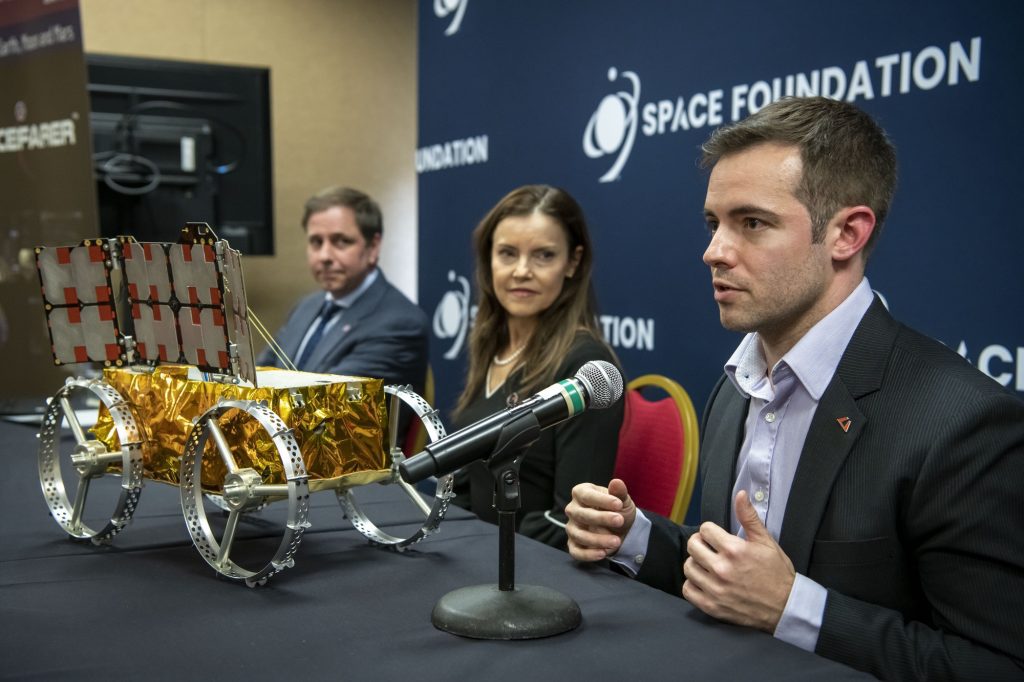COLORADO SPRINGS — Astrobotic is teaming up with Canadian space software company Mission Control on a small rover that will travel to the Moon on Astrobotic’s upcoming lander mission.
The two companies revealed on April 8 that they will use Mission Control’s Spacefarer software to operate Astrobotic’s first CubeRover, which will head to the moon on Astrobotic’s Griffin-1 lander expected to launch later this year. The CubeRover will be one of multiple secondary payloads on that lander, which will also carry NASA’s VIPER rover.
The shoebox-sized rover will test its maneuverability and communications on this initial mission. It will also showcase the Spacefarer software’s capability to control the rover, including semi-autonomous navigation across the surface and analysis of images captured by the rover’s cameras.
“We decided to work with Mission Control due to their extensive capabilities in Spacefarer and the very user-friendly interface they developed,” said Mike Provenzano, vice president of advanced development programs at Astrobotic, during a briefing at the 39th Space Symposium.
Spacefarer is a cloud-based mission operations tool, explained Ewan Reid, founder and chief executive of Mission Control, providing convenient access to telemetry and other data as well as the ability to command a spacecraft through a point-and-click interface. It offers, he said, “all sorts of different tools that users need to try to make the best smartest decisions in the shortest amount of time.”
The software will enable distributed control for CubeRover, with mission operations managed both at Astrobotic’s Pittsburgh headquarters and Mission Control’s Ottawa headquarters. “It’s truly going to be a joint mission with operators at both locations,” said Provenzano. “That’s really exciting and something that Spacefarer enabled.”
Mission Control used a version of Spacefarer on another lunar lander mission, ispace’s HAKUTO-R M1 lander, but that spacecraft crashed attempting to land on the moon in April 2023. Reid said that the software would have been able to receive and analyze data from that lander but not command it.
Using Spacefarer on CubeRover, he said, will help Mission Control open up new opportunities for his company, demonstrating that Spacefarer can handle operations of spacecraft. Those customers, he argued, can focus on their specific technologies, “and they don’t have to reinvent the wheel for an operations platform.”
The Canadian Space Agency (CSA) funded the development of Spacefarer through its Lunar Exploration Accelerator Program (LEAP), designed to help Canadian companies demonstrate technologies for lunar missions. “The CSA understands that without that step in our development timeline, without having validated something that has flown and operated on a real mission, it’s very hard for us to sell it around the world,” Reid said.
“Commercial companies are at the very beginning of creating a new market and economy at the moon,” said CSA President Lisa Campbell. “LEAP was created to provide a wide range of opportunities for Canadian science and technology activities in lunar orbit, on the moon’s surface and beyond.”
She stated that the deal between Astrobotic and Mission Control is confirming something that we believe in at the agency, which is that we must experiment, we need to be daring. The world desires more of what Canada can provide.









